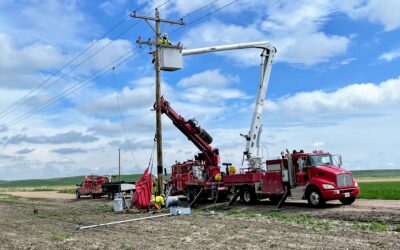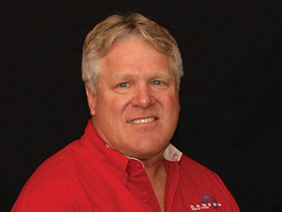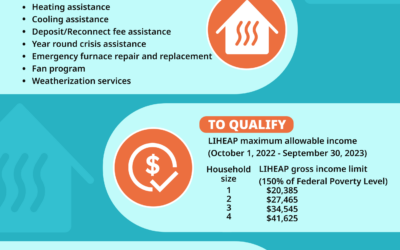
As a not-for-profit utility, Dawson PPD focuses on cost-effectively extending the life of its existing facilities while maintaining adequate levels of safety and reliability. Testing wooden poles helps the District ensure reliability and long life of its equipment, saving customers money in the long run.
Traditionally, pole testing involved a hammer for sounding, a shovel for digging around the base and drilling holes to test for decay. Today, Dawson PPD hires a contractor that uses a scientifically-based system called POLUX as a less-invasive and more accurate form of testing.
POLUX works by sending two, three inch long probes the size of an eight-penny nail into the base of the utility pole. This is the most vulnerable point where decay is most likely to occur on a pole. The probes measure resistance and moisture content of the pole. This information, along with the type of wood the pole is made of and how it was treated are run through a computer program with the pole’s GPS location recorded.
Typically, Dawson PPD uses a Southern Yellow Pine tree for its poles, which should have a resistance of 8,000 pounds per square inch when new. If the measurement falls below 50 percent of the recommended resistance, in this case 4,000 PSI, the pole is marked for replacement.
All of Dawson PPD’s poles are tested every 10 years on a rotating schedule with 10,000-11,000 poles tested annually.
OTHER NEWS
What is the distribution charge?
When some customers think of paying their electric bill, they may tend to think of the cost in kilowatt hours. However, there is more involved in the cost than just the kilowatt hours used.
Ask the board: A conversation with Dan Muhlbach
Dan Muhlbach Dawson PPD Vice President Area served: Buffalo Subdivision Years of service: 27 years Certifications: National Rural Electric Cooperative Association Credentialed Cooperative Director National Rural Electric Cooperative Association Board Leadership...
Low income home energy assistance program
LIHEAP helps low income households stay safe and healthy by providing financial assistance to offset the costs of heating and cooling. What it does Heating assistance Cooling assistance Deposit/Reconnect fee assistance Year round crisis assistance Emergency furnace...



